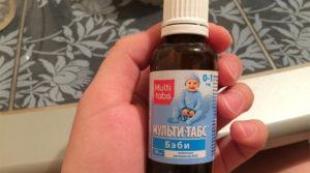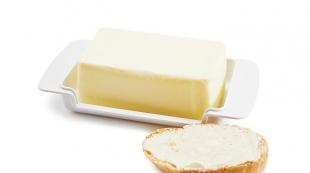Where to fill a paintball tank. Filling paintball tanks
In such an exciting game as paintball, constant refilling of cylinders is required - the main source of energy for the marker. It is on the strength of the gas (compressed air) that the paintball cylinder is filled with that the speed at which the ball will fly out of the barrel depends. Have you ever wondered how paintball tanks are refilled? Perhaps you have never asked such a question in your life, or maybe you don’t really need this information, however, if you are on this page, it’s probably not just amateur interest that brought you here.
Especially for those who think, then once to see how paintball cylinders are filled with gas is quite enough to do such a manipulation yourself - you are mistaken. You may have understood the basic principle of how a paintball tank should be filled, but without certain knowledge (and practice as well), it is not recommended to do this.
Learning... how to properly fill a paintball tank.
We will not bore you with the details of what is made from composite materials high strength or aluminum; that there are both disposable and reusable cylinders, that the latest paintball tanks are larger in size, and one of their refills can be enough for several hundred shots. Let's focus on the main thing. So that with each subsequent refueling of a paintball cylinder there will be no questions about how to fill a paintball cylinder in accordance with elementary safety rules, remember a brief guide to action that will help you do such manipulations yourself or give you the opportunity to control the work of a specialist who does this professionally.
- Screw one end of the gas station onto a large receiver tank, and the other end onto a “small” paintball tank. It is very important that the paintball tank is below the receiver and in a position with the back raised.
- Check if the valve to the cylinder being filled is open.
- Open the special valve of the receiver cylinder to fill the container with air.
As a rule, the refueling process lasts no more than 2-3 minutes. You can check how full the cylinder is by reading the pressure gauge on it.
And finally - take care of paintball cylinders. Do not hesitate if you notice deformations of the seals on the cylinders, ruptures or wear - change them immediately to avoid unpleasant, and possibly even dangerous situations. As in any weapon, in a paintball marker all the constituent elements and mechanisms must work smoothly and clearly.
We are pleased to offer a new service to our customers - refilling cylinders with air in the Shchelkovsky district of the Moscow region. Pneumatic weapons are highly valued all over the world, because they are accurate, reliable and powerful. But for the functioning of pneumatics, you need compressed air. It is important that such weapons are constantly recharged. With each new shot, there is less and less air, which means that the pressure decreases. And although modern air rifles in most cases retain primary power until the last shot, refilling cylinders with air in the Shchelkovo region necessary.
Both hand pumps and high pressure cylinders can be used to charge PCP airguns. In the second case, it is important to consider that the cylinder has a higher pressure than the pneumatic reservoir. If the values are equal, then there will not be much sense in such a dressing. Although this option is possible (when the PCP pressure is comparable to the cylinder pressure), but the number of shots will be minimal. And with each such recharging, it decreases. We offer air filling of cylinders up to 300 atm – best option for:
- Pneumatics.
- Respiratory apparatus.
Filling cylinders with air must be completed in accordance with the rules. That is why it is so important to turn to professionals who will do everything as required by technology and safety rules. Need to refill air cylinders - contact us! We are always happy to help, complete an order and answer all customer questions.
We offer profitable terms cooperation
Cylinders are filled with air that has undergone multi-stage purification. Our clients can have no doubts about the quality of the service, because we make sure that everything is in accordance with the rules.
Refueling of cylinders with air Shchelkovsky district carried out daily (we accept orders and work seven days a week). The price of the service will please, the cost is affordable:
- Refueling of small cylinders for PCP - 300 rubles.
- Refueling of large cylinders (40 liters) - 500 rubles.
We provide delivery if necessary. Refueling of cylinders with air in Shchelkovo will be produced quickly and efficiently. After all, you are turning to experienced professionals who provide guarantees. You can clarify all the details and ask questions by calling the phone number - 8-916-777-32-54.
Novice players often ask us the same questions. Therefore, we decided to release a series of videos for beginners in paintball with answers to the most popular questions. We also recommend subscribing to our channel, where there are many useful videos (SUBSCRIBE).
Paintball video for beginners part 1
Paintball video for beginners part 2
Below is also an abridged text version of the responses.
1. Will the accuracy increase if I put an even longer barrel?
No, it will not increase, the length of the barrel NO WAY does not affect accuracy. More information on technical specifications paintball barrels can be read in this.
2. Is there a difference between rifled and smooth bore?
Some manufacturers make rifled barrels with longitudinal or spiral rifling. The main idea in the manufacture of such barrels is to reduce the contact of the ball with the walls of the barrel. When using such trunks, air consumption increases. And there is a difficulty in manufacturing, since it is quite difficult to make the cut on the barrel correctly (the same depth throughout the barrel). In the production of barrels with spiral cut, the goal is to slightly twist the ball, but there is little sense in this.
3. Do compensators and mufflers have an effect?
No. Basically just add ambience.
4. What is the difference between air and CO2?
CO2 is stored as a liquid and has a lower pressure but higher coefficient of expansion than air. In this regard, the main problem with the use of CO2 is its instability and increased sensitivity to weather conditions. The second problem is that because of the causticity of the gas, the pads and other elastic parts of the marker wear out much faster. Also, most electronic markers DO NOT WORK with CO2.
5. If you screw a higher pressure tank onto the marker, will the marker shoot further?
The winter ball has thicker walls due to the fact that it becomes more fragile in the cold. A summer ball in winter will most likely just split when fired.
9. Can I play paintball with an airsoft mask and vice versa?
The airsoft mask is designed specifically for airsoft, where the muzzle energy is about 1-3 joules. In paintball, it is about 12.5 joules. There is a high probability of damage to the airsoft mask by the ball. You can play airsoft.
10. How often should the marker be taken apart?
Ideally, lubricate and clean after each game. In fact, at least once every 3-4 games, if the marker did not prick.
11. The marker does not shoot or does it shoot poorly?
Change the battery first if it's an electronic marker. Then check if the marker is clean, remove and lubricate the bolt group. Check the condition of the main gaskets.
12. The marker poisons, what could be the problem?
In order to find out what the problem is, you first need to determine where exactly your marker is poisoning. Based on this, it is already possible to understand which assembly or gasket needs to be replaced. If you yourself cannot figure out what exactly is to be replaced, then you must at least determine the place where the marker is poisoning from. Technical Specialist it will be easier to help you.
13. What kind of batteries is better to use for a marker?
Duracell, Energizer, Paintball Energy.
14. What is the difference between a budget and expensive marker?
The price of a marker depends on the accuracy and efficiency of all its mechanisms, material consumption and manufacturability. Roughly speaking, an expensive marker shoots much better.
15. What kind of scope / bipod / rail / handguard to buy for?
Any upgrade is put by a person according to his PERSONAL preferences and vision of the game. Just think about what you need and whether you need it at all.
16. What is the difference between tactical and sports markers?
Appearance, firing modes, the ability to install additional equipment (lights, face, optics).
17. Can WD-40 be used when servicing the marker?
The marker uses fairly high pressure. A flammable liquid plus high pressure equals an explosion. Yes, and WD-40 pads kill very quickly. So only as a last resort and at your own risk.
18. Can the marker be washed with water?
Yes, but undesirable, as corrosion can begin due to water. Washing electronic markers with water is strictly not recommended.
19. Do all masks sweat?
Any thermal (two-layer) lens will sweat an order of magnitude less than a single-layer one. Fogging of the lens is aggravated by constant exertion (excessive sweating), alcohol consumption, cold or damp weather. Expensive masks are expensive because they have the best possible ventilation, which also allows the mask not to fog up for a long time.
Yes, but be careful not to get water between the two layers of the lens. Otherwise, the lens will be damaged.
21. Is it possible to fill the cylinder with a car compressor?
No, because the pressure that a car compressor can fill is 50 times lower than required.
22. Harness or unload?
In sports paintball, this question is not raised, because it is prohibited. If you carry any other equipment besides tubes, it will be advisable to purchase it due to the huge number of pockets and pouches. If you do not burden yourself with carrying special stages, then you can stop your choice on harness.
Paintball is one of the most active types of recreation. And the more actively you play, the faster the pressure level in your tank drops. Without the proper level, the ball will not be able to reach its target. You will pull the trigger, but you will not get the expected result. To avoid this on the “battlefield”, it is worth checking the level during breaks gas mixture.
What are paintball tanks filled with?
Arriving at the playground, the first thing that catches your eye is a balloon-receiver. Paintball guns are filled from this cylinder. In practice, two types of gas mixture are used: carbon dioxide and air itself. Other mixtures are not advisable to use for paintball, because they do not have the desired qualities. It is also important to consider that filling a cylinder with air or nitrogen will have a completely different cost.
Most often you can find ordinary atmospheric air filled in cylinders. The ideal ratio of oxygen and nitrogen gives excellent shooting performance from a paintball marker. The air is pre-compressed. This can be done at gas stations where there is a high pressure compressor. That is, it is clear that in living conditions, "charge" the balloon will not work. Depending on the air compression, different pressures are obtained in the cylinder: 3000 psi or 4500 psi. If we translate these values into atmospheres, it turns out that a pressure of 3000 psi corresponds to 204 atmospheres. In a paintball gun, you can always see on the pressure gauge the level of gas pressure in an aluminum cylinder. The marking of the pressure gauge bears the inscription x1000 and an arrow with numbers, from 0 to 5. Multiplying the number by a thousand, you will get the value in psi.
How to refill paintball tanks
Preparatory stage for refueling the cylinder
Usually, when playing paintball, only club employees fill the tanks, observing safety precautions, and also referring to the fact that the player should relax and have fun. However, if you decide to fill your tank yourself, then it is better to study in more detail some aspects of this process in order to organize full air tanks for yourself and your friends with the air of an expert!
You will need to approach the gas station, which includes cylinders-receivers. It is necessary to create an airtight connection between the game tank and the liquefied air tank. This is done with the help of a not at all bulky conductor, which is initially attached to the valve of the receiver cylinder. In addition to the conductor, the gas station contains other elements.
On the other side of the liquefied air tank is a foster. Foster is the second conductor. There is a very high pressure in the receiver cylinder, and if the air goes out with a poorly fixed nipple of the gun cylinder with a foster gun, then the cylinder can literally be pulled out of your hands. No one needs unnecessary trauma, especially during rest. To make this technical procedure right, you will need to slide the top of the fosterer towards the filling bottle. With this action, you will expose the bearings, with the help of which the filler nipple of the game cylinder will be well fixed.
The next step is to return the previous part of the foster to its original position. This action will ensure a firm grip between the nipple and the balloon. Everything must be sealed and tight. This item completes the preparatory stage of filling the cylinder.
Filling a paintball can
All conditions are met to let compressed air from the receiver cylinder through the nipple. Just one movement and you will hear a slight hiss, which will indicate the transfer of air into a small cylinder due to a pressure difference. The pressure will gradually equalize until the game cylinder is filled with air to capacity. The receiver valve is responsible for this movement. On average, 3000psi is enough for normal play. Therefore manual control of filling of a cylinder is necessary. If you fill it with air to the level of the maximum mark, then you can get some discomfort from the game - the balls will fly a little not where you aim. Also, do not forget that the balloon can be damaged if the air is over-inflated. In the event of such damage, material damage will be not only the game cylinder, but also the regulator of the receiver cylinder.
End of refueling
After looking at the arrow of the pressure gauge to the figure determined by the technical passport of the cylinder, it is necessary to begin to reduce the air supply. Then you need to manipulate the filling nipple of the cylinder, disconnecting it from the foster cylinder-receiver. The last point cannot be completed immediately.
You can't rush here. There is still the same pressure between the game tank and the station, in other words, there is air under pressure in the system. This will prevent you from simply picking up and disconnecting the cylinder. It is necessary to bleed the air by finding the lever or button (depending on the receiver cylinder), which is responsible for releasing air from the intermediate part of the system. By pressing the button / lowering the lever, you will hear how excess air is released into environment, usually from the back of the gas station. Only after this point can the fosterer be moved to its original position and the filling nipple removed. Tank filled and ready to go new game in paintball.
The frequency of refilling paintball tanks depends on how often you shoot. Any refueling in paintball is made from a tank-receiver. There are 2 main types of gas in paintball: air and carbon dioxide. We do not take experiments with other gases due to their complete absence in use in paintball. Each gas has its pros and cons, which we will now consider.
Now the most popular filling gas for paintball cylinders is air. The mixture of nitrogen and oxygen that we breathe every day has become vital in paintball as well. Air is refueled in a compressed state - so more of it is placed in a paintball tank. The amount of compression used varies depending on the type of paintball tank and regulator. However, they can be divided into 2 most commonly used. Pressure 3000psi and 4500psi. To carry out filling of paintball cylinders with air into the cylinder-receiver, a special high-pressure compressor is required. Because paintball pressure gauges are marked with single numbers and often with a small x1000 signature in the center, beginners get the impression that the marker works at a pressure of only 3 atmospheres. However, the gauge reading is in psi and the standard pressure for a typical aluminum paintball tank is 3000psi or 204 atmospheres.
The process of preparing for refueling
So, despite the fact that you have played paintball more than once or twice, most likely you do not know how to accurately fill paintball cylinders. You've seen paintball club employees do it, it's quite possible that you understand the principle, but if you decide to do this operation yourself, it's better to know for sure.
To refuel a paintball cylinder from a cylinder - a receiver, you will need a filling station. The name is fundamental, the station itself is not very good. This is a small adapter that is screwed onto the cylinder - the receiver. The filling station for air looks like this:
On the opposite side of the receiver tank there is a second adapter, called a foster. Because refilling of paintball cylinders is carried out under high pressure, it is necessary to firmly connect the filling nipple of the cylinder to the fuel station fosterer. Otherwise, when air is supplied from the cylinder - receiver, the refilled cylinder will at least bounce to the side. I won’t talk about the maximum, anything can happen. In order to properly fill paintball cylinders, you need to move the upper part of the fosterer towards the tank - receiver. Foster bracket retracted, frees bearings and allows cylinder filling nipple to be inserted into foster.
After that, we release the bracket and it shifts back into place, fixing the bearings and fixing the filling nipple of the cylinder in the filling station. This completes the process of preparing for refueling paintball cylinders.
Filling paintball tanks
Filling process
So. The gas station is closed. The filling nipple is fixed in the foster. You can start refueling. Carefully opening the valve of the cylinder-receiver, you will hear how the air passes from one cylinder to another. Although to be precise, there is a communication of vessels. The pressure of one cylinder equalizes with the pressure of the other. Thus, we fill a small balloon. Considering that your cylinder does not always have a pressure tolerance equal to the tolerance of the cylinder - the receiver, which may have a higher pressure - you should monitor the pressure on the pressure gauge of the cylinder being filled and stop filling the paintball cylinder when the maximum allowed pressure is reached. Failure to do so may damage the cylinder itself and the regulator.
Filling paintball tanks
Completion of refueling
We settled on stopping refilling a paintball tank when it reaches the maximum pressure allowed for your tank. In fact, refueling is completed and now you need to pick up your tank by disconnecting its filling nipple from the fuel station fosterer.
But it won't work right away. There is still pressurized air in the filling station system. It will not allow you to open the foster and take out the cylinder filling nipple. This pressure must be removed by bleeding off the excess air remaining in the gas station. The operation is quite simple. The gas station has a special button or lever (on older versions). We press it and a jet of air under pressure escapes from the opposite side of the gas station. All! Excess air is bled off, you can remove the cylinder nipple from the fosterer. By the reverse operation, we shift the fosterer and take out the filling nipple from the fosterer. The refilling of the paintball tank is complete.
Sincerely, A.J.
Paintball Club "2 SHARA"
Additional Information
Paintball Tanks - An article about types of paintball tanks, regulators and tolerances for paintball gas systems. Filling with carbon dioxide - refilling paintball tanks with carbon dioxide, the advantages and disadvantages of carbon dioxide.









